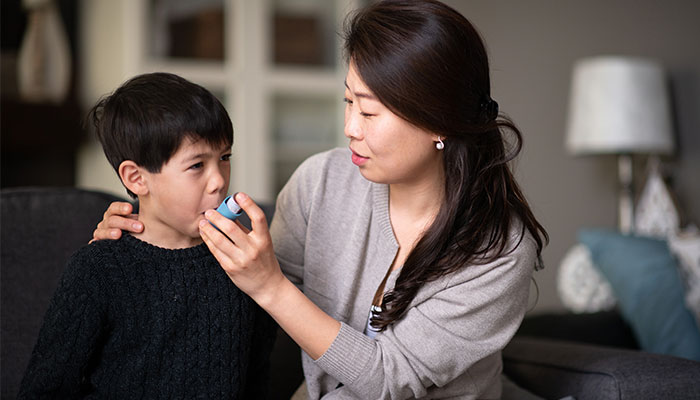As Australia faces its hottest summer on record, with bushfires pushing air quality to many times hazardous levels, parents and children with asthma and anxiety face heightened worry.

At risk: the research found children wiht asthma are three times more likely to have an anxiety disorder than those without asthma.
“There's a vicious cycle with asthma and anxiety,” says Dr Gemma Sicouri, a clinical psychologist and research fellow from the Centre for Emotional Health. “If we can manage anxiety, then hopefully we can gain more control of asthma symptoms as the anxiety can worsen those symptoms.”
One in ten children worldwide has asthma. Although the condition can’t be cured, children can manage it and live healthy lives. Unfortunately, asthma goes hand-in-hand with mental health conditions and particularly anxiety disorders, Sicouri says.
Drawing on researach conducted by colleagues Dudeney, Sharpe, Jaffe, Jones, & Hunt, Sicouri said children with asthma are three times more likely to have an anxiety disorder than those without asthma.
“Sometimes their anxiety is linked to asthma, like fear about doing exercise that might bring it on,” she says. “At other times it’s not related, like worry about going to parties or talking to new people.”
Caregivers whose children have asthma are also more likely to be anxious and stressed her research shows – and children with anxious caregivers are more likely to be anxious themselves.
Learning to face fears
Sicouri has developed a strategy to tackle both asthma and anxiety. She acknowledges that days with really poor air quality are a real trigger and threat for asthma sufferers, and suggests that caregivers and children should listen to their doctor and stay inside.
The first step ... is to learn the difference between the symptoms of asthma and anxeity.
“Anxiety is also a normal and healthy reaction to deal with danger. Once the brain is aware of a threat, this automatically causes a ‘fight-or-flight’ response which sends hormones to various parts of the body to deal with the danger,” Sicouri says. “Your heart and breathing rates speed up. You might sweat, tremble or shake.”
However, her research shows that children with asthma tend to misinterpret normal bodily sensations as they think the worst will happen, and this increases their worry about their asthma, which exacerbates both their anxiety and asthma symptoms.
So the first step of Sicouri’s strategy is for caregivers and children to learn to differentiate between the symptoms of asthma and anxiety; wheezing, coughing and mucus production are three unique symptoms that occur only during an asthma attack but not during the fight-or-flight response.

Strategy: Dr Gemma Sicouri says parents and children learn to manage anxiety, they can hopefully gain more control of asthma symptoms.
The next step is to help these children gradually face their fears. For example, on better days when the smoky conditions subside, go outside and do a bit of exercise.
“You naturally avoid things that make you anxious,” she says. “Research shows that incrementally facing your fears is the best way to overcome them. If a child is anxious about doing exercise and it doesn’t trigger their asthma, one strategy might be to start with five minutes a day and then increase it every day.”
At the same time, she recommends caregivers take a step back, and encourage their child to be more independent and courageous. “If caregivers protect their child from situations which do not represent a real threat, such as taking a test or meeting new people, then children never learn they can cope with that situation,” she says.
Instead parents should encourage children to develop skills and confidence to manage their asthma and medication, try new situations, to build their resilience and independence.
“As a child starts to develop these skills, caregivers can reward them with targeted praise so they increasingly feel positive about it,” she says. “Caregivers and children can learn the fine balance between facing their fears and staying within safe limits so children can manage their anxiety and asthma which will serve them well as they enter adolescence.”
Dr Gemma Sicouri is a Research Fellow and Clinical Psychologist at the Centre for Emotional Health in the Department of Psychology in the Faculty of Human Sciences at Macquarie University.



